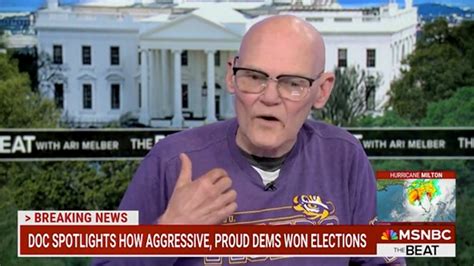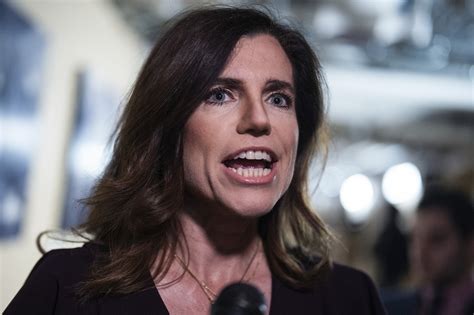
James Carville, the veteran Democratic strategist, has publicly floated the name of California Governor Gavin Newsom as a potential frontrunner for the 2028 Democratic presidential nomination, signaling a possible early endorsement from the influential political commentator.
James Carville, the Democratic strategist renowned for his sharp political acumen and often referred to as the “Ragin’ Cajun,” has ignited speculation about the 2028 presidential election by suggesting California Governor Gavin Newsom as a strong contender for the Democratic nomination. In a recent interview, Carville highlighted Newsom’s political experience, fundraising capabilities, and communication skills, hinting at a possible early endorsement that could significantly influence the Democratic field. This public endorsement is considered very important because Carville has a proven track record of shaping political campaigns and identifying promising candidates.
Carville’s remarks, made during a podcast appearance, have resonated throughout the political landscape, triggering a wave of analysis and discussion about the future direction of the Democratic Party and the potential candidates who might emerge in the coming years. By naming Newsom, Carville has not only elevated the governor’s profile but has also implicitly set the stage for a broader conversation about the qualities and qualifications that will be essential for the next generation of Democratic leaders.
“I think Newsom is a formidable candidate,” Carville stated, emphasizing Newsom’s demonstrated ability to win elections in a large and diverse state like California. He also pointed to Newsom’s skill in handling complex policy issues and his knack for connecting with voters across different demographics. These characteristics, according to Carville, make Newsom a particularly compelling figure in a party that is actively seeking to identify its standard-bearer for the next presidential cycle.
The endorsement from Carville carries significant weight due to his decades of experience in Democratic politics. He played a pivotal role in Bill Clinton’s successful 1992 presidential campaign and has since been a prominent voice in shaping Democratic strategies and messaging. His endorsement is often seen as a bellwether, signaling to other party leaders, donors, and activists which candidates are likely to gain traction and receive substantial support.
Newsom, who has served as the governor of California since 2019, has already built a national profile through his progressive policies and his vocal opposition to the Trump administration and, more recently, policies from Republican governors like Florida’s Ron DeSantis and Texas’ Greg Abbott. He has championed initiatives on climate change, healthcare, and education, positioning himself as a leading voice for progressive values within the Democratic Party.
While Newsom has not officially announced any plans to run for president in 2028, his actions suggest a growing interest in national politics. He has traveled extensively throughout the country, speaking at political events and engaging with voters in key states. He has also been an active fundraiser for Democratic candidates, further solidifying his standing within the party.
The endorsement from Carville could provide Newsom with a significant boost as he navigates the early stages of a potential presidential campaign. It could help him attract more attention from donors, recruit top talent to his team, and gain an advantage over other potential candidates who may be considering a run.
However, Newsom also faces challenges as he contemplates a presidential bid. He will need to address concerns about California’s high cost of living, its struggles with homelessness, and other pressing issues facing the state. He will also need to convince voters that he can appeal to a broad range of constituencies, including those in more conservative states.
Moreover, the Democratic field in 2028 is likely to be crowded with other ambitious politicians who are eager to seize the opportunity to lead the party. Potential candidates could include Vice President Kamala Harris, who would likely be a strong contender if she chooses to run, as well as other prominent governors, senators, and members of Congress.
The coming months and years will be crucial as these potential candidates begin to define their platforms, build their organizations, and make their case to voters. The endorsement from Carville has undoubtedly injected new energy into the conversation and has positioned Newsom as a candidate to watch as the 2028 election cycle begins to take shape.
In addition to his political experience and fundraising capabilities, Newsom’s youthfulness is seen as an advantage. He represents a newer generation of Democratic leaders, which could appeal to younger voters and those who are looking for a fresh perspective.
The “Ragin’ Cajun’s” nod is particularly significant because it underscores the internal dynamics within the Democratic Party. As the party seeks to rebuild after recent electoral setbacks, there is an ongoing debate about the best path forward. Some argue for a more centrist approach, while others advocate for a more progressive agenda. Newsom, with his blend of progressive policies and pragmatic leadership, could be seen as a candidate who can bridge these divides and unite the party around a common vision.
Carville’s endorsement also reflects a broader trend in American politics, where governors are increasingly seen as viable candidates for the presidency. Governors have the advantage of executive experience, having managed large state governments and dealt with a wide range of policy challenges. They are also often seen as more pragmatic and less ideological than members of Congress, which can be an asset in a polarized political environment.
As the 2028 election draws closer, it is likely that more prominent figures will weigh in on the race and offer their endorsements. These endorsements can have a significant impact on the trajectory of the campaign, helping to shape the narrative, influence donor behavior, and sway voter preferences. Carville’s early endorsement of Newsom is a clear indication that the 2028 presidential election is already on the minds of many political strategists and party leaders.
The early focus on Newsom also allows him to begin building a national campaign infrastructure. This includes fundraising networks, communication strategies, and relationships with key stakeholders in different states. By getting a head start, Newsom can position himself as the frontrunner and make it more difficult for other potential candidates to gain traction.
However, the road to the White House is long and unpredictable, and there are many factors that could influence the outcome of the 2028 election. The state of the economy, geopolitical events, and the political climate will all play a role in shaping the race. It is also possible that unforeseen events or emerging issues could alter the dynamics of the campaign and change the calculations of the candidates and their strategists.
Despite these uncertainties, one thing is clear: the 2028 presidential election is already shaping up to be a highly competitive and closely watched contest. With prominent figures like James Carville weighing in and potential candidates like Gavin Newsom positioning themselves for a run, the stage is set for a fascinating and consequential election cycle.
Furthermore, Carville’s endorsement could be interpreted as a strategic move to consolidate support behind a single candidate early on, thereby avoiding a potentially divisive primary battle. A contested primary could weaken the eventual nominee and make it more difficult for the party to unite heading into the general election. By throwing his weight behind Newsom, Carville may be hoping to discourage other potential candidates from entering the race and to create a sense of momentum behind Newsom’s candidacy.
The implications of Carville’s endorsement extend beyond the immediate impact on Newsom’s potential campaign. It also reflects broader trends in the Democratic Party and American politics. The focus on governors as viable presidential candidates, the importance of fundraising and communication skills, and the ongoing debate between centrist and progressive approaches are all key themes that will continue to shape the political landscape in the years to come.
Newsom’s record in California will undoubtedly come under intense scrutiny as he is considered for higher office. His supporters will point to his progressive policies on climate change, healthcare, and education as evidence of his commitment to Democratic values. His critics will highlight the challenges facing California, such as its high cost of living, its struggles with homelessness, and its budget deficits, as evidence that he is not ready for the presidency.
Ultimately, the success of Newsom’s potential presidential campaign will depend on his ability to articulate a compelling vision for the country, to connect with voters from diverse backgrounds, and to demonstrate that he has the experience and leadership skills necessary to tackle the challenges facing the nation. The endorsement from Carville is a significant first step, but it is only the beginning of a long and arduous journey.
In addition to the policy issues, Newsom will also have to navigate the complex political landscape of the Democratic Party. He will need to build strong relationships with key constituencies, such as labor unions, minority groups, and environmental organizations. He will also need to appeal to moderate voters who may be wary of his progressive views.
The endorsement from Carville could also serve as a signal to other potential donors and supporters to get involved in Newsom’s campaign. Fundraising is a critical aspect of any presidential campaign, and Newsom will need to raise a significant amount of money to compete effectively with other candidates. The endorsement from Carville could help him attract the financial resources he needs to run a successful campaign.
Moreover, Carville’s backing could help Newsom gain access to a network of experienced political strategists and advisors. These individuals can provide valuable guidance on campaign strategy, messaging, and fundraising. They can also help Newsom navigate the complex political landscape and avoid potential pitfalls.
However, endorsements are not always a guarantee of success. Many factors can influence the outcome of a presidential election, and endorsements are just one piece of the puzzle. Newsom will still need to work hard to win over voters and build a strong campaign organization.
Despite these challenges, the endorsement from Carville is a significant boost for Newsom and positions him as a leading contender for the Democratic nomination in 2028. It will be interesting to see how he capitalizes on this opportunity and how his potential campaign evolves in the coming months and years.
Furthermore, the timing of Carville’s endorsement is noteworthy. By weighing in so early in the 2028 election cycle, he is attempting to shape the narrative and influence the direction of the Democratic Party. This could be seen as an effort to prevent a more progressive candidate from gaining traction or to ensure that the party remains aligned with centrist values.
The endorsement also raises questions about the future of the Democratic Party. As the party grapples with internal divisions and seeks to appeal to a broader range of voters, the choice of its next presidential nominee will be crucial. The candidates who emerge in the coming years will need to be able to bridge these divides and unite the party around a common vision.
Newsom’s potential candidacy also highlights the changing demographics of the United States. California is one of the most diverse states in the country, and Newsom’s success in winning elections there suggests that he has the ability to connect with voters from different backgrounds. This could be an asset in a national election, as the Democratic Party seeks to build a coalition that includes voters of color, young people, and suburban residents.
However, Newsom will also need to address concerns about his policies and his record in California. He will need to convince voters that he can address the challenges facing the state and that he has the experience and leadership skills necessary to lead the country.
The endorsement from Carville is a significant step for Newsom, but it is only the beginning of a long and challenging process. He will need to work hard to win over voters and build a strong campaign organization if he hopes to win the Democratic nomination in 2028.
In conclusion, James Carville’s endorsement of Gavin Newsom for the 2028 Democratic presidential nomination has injected new energy into the political landscape. It signals a potential shift in the Democratic Party’s direction and sets the stage for a competitive and closely watched election cycle. While Newsom faces challenges, Carville’s backing provides a significant boost as he navigates the early stages of a possible presidential campaign, solidifying his position as a candidate to watch in the years to come. The endorsement also underscores the broader trends in American politics, including the increasing viability of governors as presidential candidates and the ongoing debate between centrist and progressive approaches within the Democratic Party. As the 2028 election draws closer, the implications of Carville’s endorsement will continue to unfold, shaping the narrative and influencing the future of the Democratic Party.
Frequently Asked Questions (FAQs)
1. Why is James Carville’s endorsement of Gavin Newsom significant for the 2028 election?
James Carville’s endorsement carries significant weight due to his decades of experience as a Democratic strategist. He played a pivotal role in Bill Clinton’s successful 1992 presidential campaign and has since been a prominent voice in shaping Democratic strategies. His endorsement is often seen as a bellwether, signaling to other party leaders, donors, and activists which candidates are likely to gain traction and receive substantial support. It can boost Newsom’s visibility, fundraising efforts, and access to key political networks early in the election cycle. According to Carville, “I think Newsom is a formidable candidate,” highlighting Newsom’s experience, political capabilities, and communication skills.
2. What are some potential challenges Gavin Newsom might face in a 2028 presidential run?
Newsom faces several challenges, including addressing concerns about California’s high cost of living, its struggles with homelessness, and other pressing issues facing the state. He will also need to convince voters that he can appeal to a broad range of constituencies, including those in more conservative states. “He will need to address concerns about California’s high cost of living, its struggles with homelessness, and other pressing issues facing the state,” as outlined in numerous political analyses. He will need to demonstrate that his policies can translate to national success and appeal to diverse voter demographics beyond California.
3. Who are some other potential Democratic candidates who might run in 2028?
The Democratic field in 2028 is likely to be crowded with other ambitious politicians. Potential candidates could include Vice President Kamala Harris, who would likely be a strong contender if she chooses to run, as well as other prominent governors, senators, and members of Congress. The competition will be fierce, and each candidate will need to build a strong campaign organization and articulate a compelling vision for the country. As mentioned, it’s expected that “Potential candidates could include Vice President Kamala Harris… as well as other prominent governors, senators, and members of Congress,” indicating a robust field of contenders.
4. How could Carville’s early endorsement impact the Democratic Party’s internal dynamics?
Carville’s endorsement could be interpreted as a strategic move to consolidate support behind a single candidate early on, thereby avoiding a potentially divisive primary battle. A contested primary could weaken the eventual nominee and make it more difficult for the party to unite heading into the general election. By throwing his weight behind Newsom, Carville may be hoping to discourage other potential candidates from entering the race and to create a sense of momentum behind Newsom’s candidacy. It’s speculated that “Carville’s endorsement could be interpreted as a strategic move to consolidate support behind a single candidate early on, thereby avoiding a potentially divisive primary battle.”
5. What are the key strengths that make Gavin Newsom a potentially strong presidential candidate?
Newsom’s key strengths include his political experience as the governor of California, his fundraising capabilities, his communication skills, and his ability to win elections in a large and diverse state. He also represents a newer generation of Democratic leaders, which could appeal to younger voters and those who are looking for a fresh perspective. Furthermore, his progressive policies on climate change, healthcare, and education position him as a leading voice for progressive values within the Democratic Party. Carville has emphasized Newsom’s “demonstrated ability to win elections in a large and diverse state like California,” highlighting his broad appeal and effective leadership.









